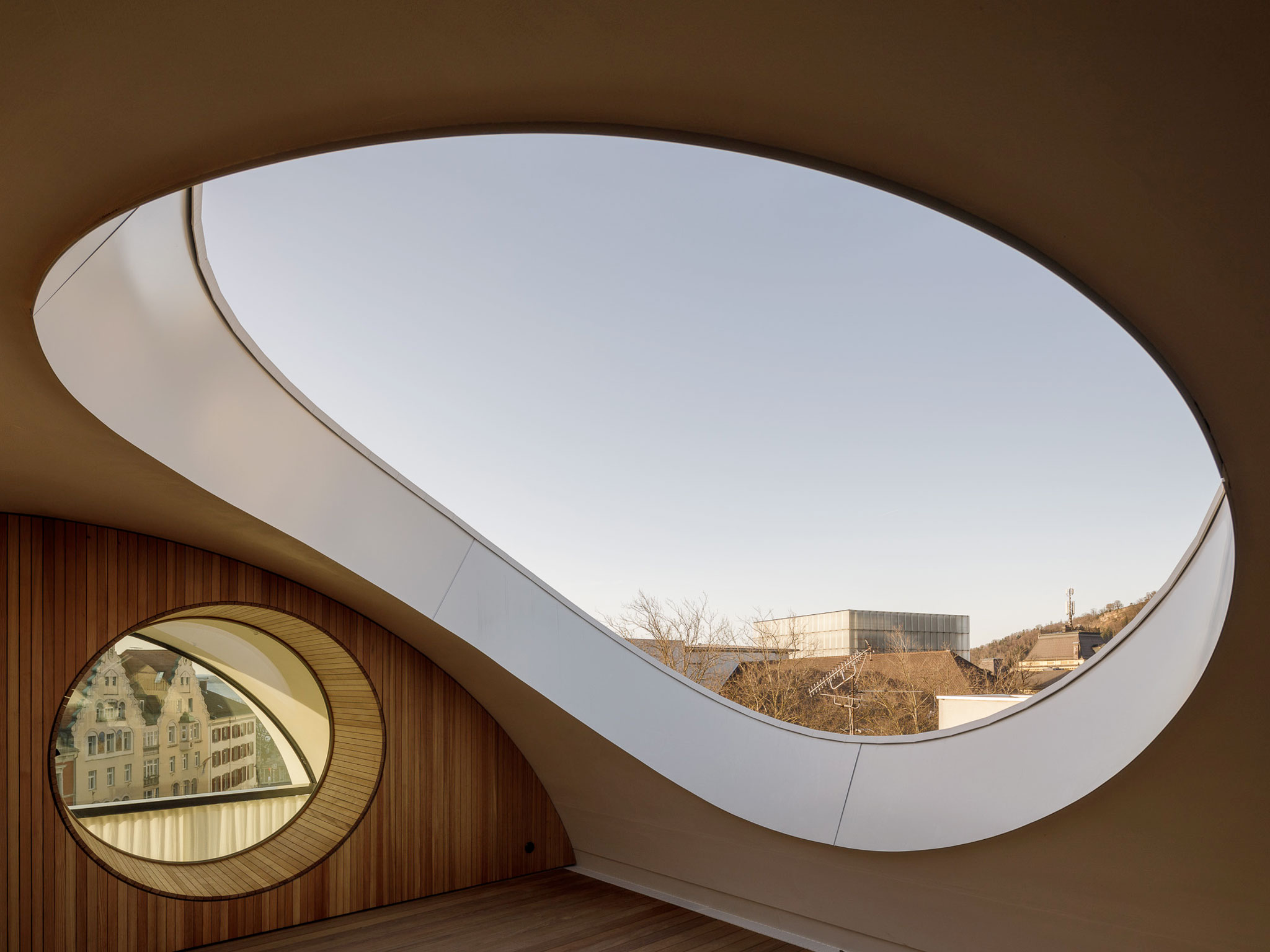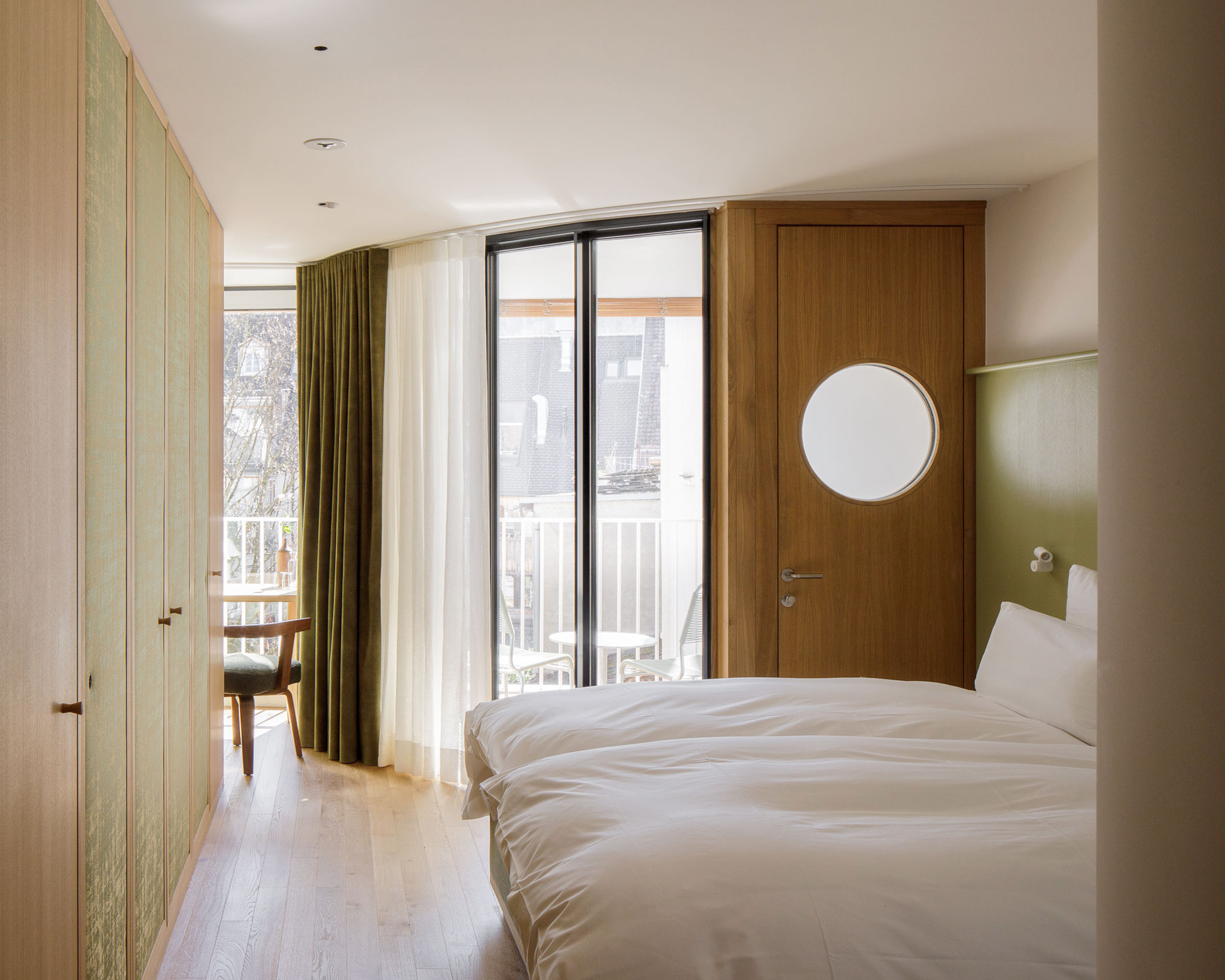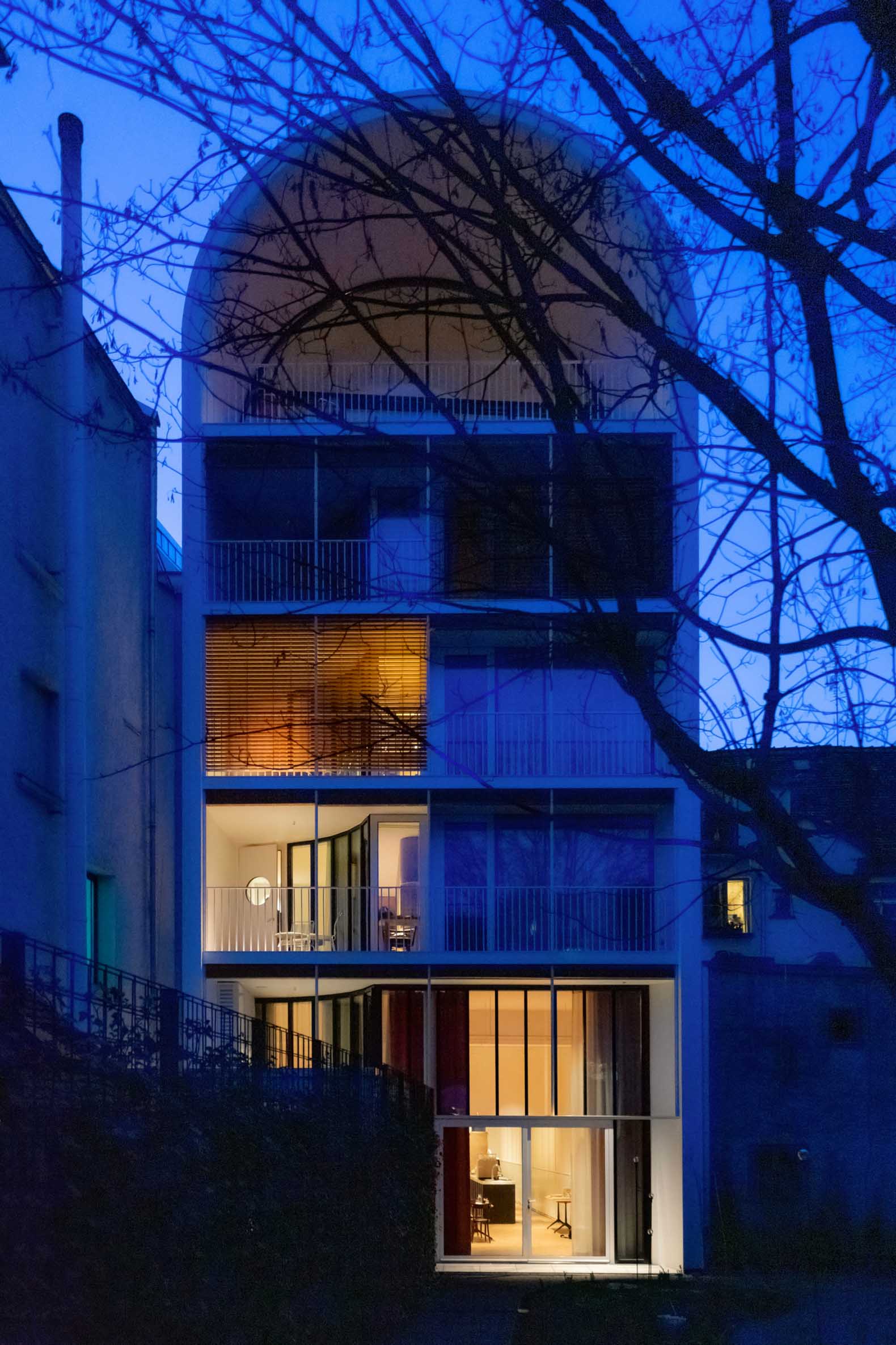The ground floor hosts a publicly accessible salon serving as the hotel lobby and a breakfast room. These spaces are flexible – they can be reconfigured through curtains, mobile furniture and lighting, for events. Light-coloured and reflective materials such as Venetian plaster bring light deep into the space.
The floors are dedicated to the hotel and a private apartment. The hotel rooms and bedrooms above are oriented to face the activity of the square, or the inside courtyard, with framed views of the lake or mountain.
The walls which divide the bedrooms – for both the hotel and the apartment – are conceived as full-height furniture elements that conceal storage, ventilation and connecting doors.


Kleiner loewe in Kornmarktplatz by Herzog & de Meuron. Photograph by Daisuke Hirabayashi.

Kleiner loewe in Kornmarktplatz by Herzog & de Meuron. Photograph by Daisuke Hirabayashi.
Project description by Herzog & de Meuron
The new townhouse on the centrally located Kornmarktplatz in Bregenz is intended to make an independent contribution to the cultural and public life of the city on Lake Constance. The new five-story building houses a small hotel, a function room for cultural events, and a private apartment, preserving the original historic façade so that the building fits seamlessly into the existing context of the city.
Built-in the 17th century, the building has housed various programs; it has been a brewery, a movie theater, a bank, a furniture store, and more recently a bar and club, all the while undergoing significant alterations with these transformations. The façade facing Kornmarktplatz has also been changed several times to reflect its respective use. The building’s neo-baroque appearance dates to its use as a bank at the beginning of the 20th century. Following a roof fire, the building remained empty for years, consequently, the building fabric suffered greatly and could no longer be preserved.

Kleiner loewe in Kornmarktplatz by Herzog & de Meuron. Photograph by Daisuke Hirabayashi.
The historic Kornmarktplatz represents the social and cultural center of the city between Lake Constance and the local mountain Pfänder. Key institutions including the Kunsthaus Bregenz and the Vorarlberg Museum, the Vorarlberger Landestheater as well as shops, cafés and restaurants are located here. The Kornmarktplatz was originally active as a supra-regional transport hub for the grain trade, later transforming into the city’s central traffic hub. In 2013, it was traffic-calmed and has since returned to its original function as a marketplace.
The front and back of the 8-meter-wide and nearly 23-meter-deep parcel each possess different characteristics: The north-facing end towards the square has a very public presence while the south end towards the inner courtyard is more private. Two firewalls close off the building running along its sides in the urban bloc connected by a barrel-shaped roof. The fire walls and the arched roof are uniformly clad forming a white metal skin, which is color-coordinated with the existing facade in light blue with white ornamentation.

Kleiner loewe in Kornmarktplatz by Herzog & de Meuron. Photograph by Robert Hösl.
Generous glazing provides an unobstructed view of the lake and over the roofs to the ridge of the Pfänder – with living spaces and hotel rooms oriented toward the narrow sides of the building accordingly. The center of the building houses a vertical access and roof terrace, bringing daylight in through a roof cutout. The multifunctional salon on the ground floor spans the entire depth of the building but can be divided into two separate rooms by a movable partition.









































































